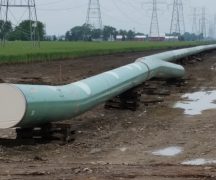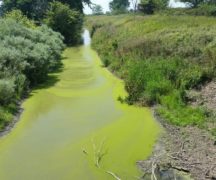By JAN LARSON McLAUGHLIN
BG Independent News
In the wake of the lead contaminated water crisis in Flint, officials in Ohio are under order to identify waterlines made of lead.
As a water provider, the city of Bowling Green must submit a waterline map to the Ohio EPA, showing the type of lines supplying homes – copper, galvanized iron, plastic or lead. That map must be submitted by March 9 and updated every five years, according to Bowling Green Director of Public Utilities Brian O’Connell.
O’Connell explained to City Council Monday evening that the city is responsible for the portion of the waterline that extends to the curb stop, but the portion of the line going into the residence is the homeowner’s responsibility.
So while O’Connell is confident the lead lines in the city’s portion have been replaced, the same cannot be said of the portions that are the responsibility of homeowners.
“We are not aware at this time of any lead lines” installed by the city, he said. Since 1967, the city service lines were all required to be copper or plastic. Prior to then, lead lines were allowed, but in the 1990s any known lead service lines were replaced.
The city has taken further steps to prevent lead in the water by adding corrosion inhibitors to the water.
Since some residents may unknowingly have lead lines in their homes, the Environmental Protection Agency has had the city test about 30 water samples each year from residences that may have older connections to the city waterlines. In the past several years, only a handful of homes have shown any detectable levels of lead. All the others have tested as “no detect” for any lead.
“I’m not trying to scare anybody,” O’Connell said. However, the risks of lead in water can be significant and long-lasting, especially to young children. “It’s an important health concern.”
In a week or so, the map showing the city’s waterlines will be put on the city’s website.
“The website is to educate customers about the potential of lead piping,” O’Connell said.
Homes built before 1998 may also have lead plumbing fixtures, since prior to then Ohio plumbing code allowed lead in fixtures. So several Bowling Green homes may be affected, since 83 percent of the city’s housing was constructed prior to 1998.
“There are no known lead service lines remaining,” O’Connell said. “But we have no record of what’s in the homes.”
The information on lead waterlines being posted on the city website will try to help city residents identify if their homes may have a problem. Instructions will be offered to help residents take water samples that can be tested for lead. The water samples must be taken first thing in the morning, or after the water has not been run for at least six hours.
The city will be required to notify any homeowners immediately if their water tests positive for lead. Those homeowners whose water tests don’t show lead must be notified in two to five days.
More information will be posted in BG Independent News when information is posted on the city website, and when more details are available.





